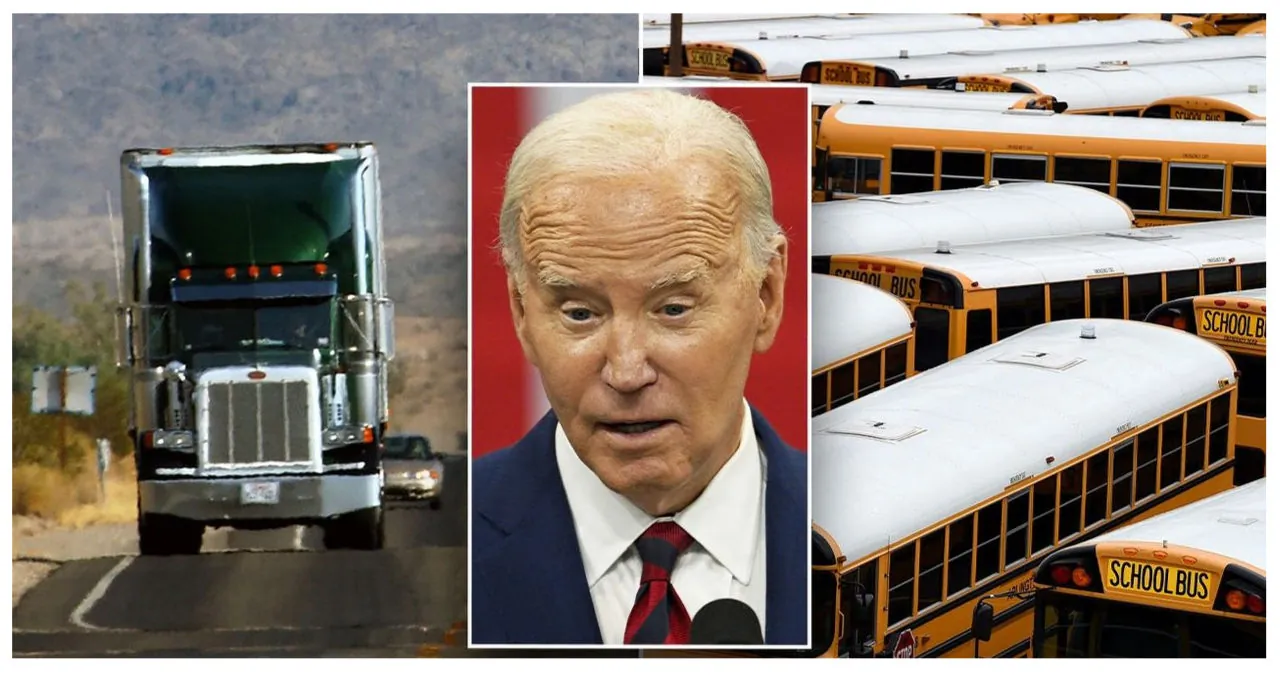The Biden administration has completed long-awaited restrictions targeting emissions from heavy-duty vehicles such as trucks and buses, the latest salvo in President Biden’s ambitious climate program.
The Environmental Protection Agency unveiled the new restrictions on Friday morning, claiming that they are the most stringent greenhouse gas emissions limits ever. The restrictions will go into effect in 2026 for model year 2027 vehicles and gradually become more stringent through model year 2032, requiring a higher number of trucks and buses to have zero emissions in that time frame.
“EPA’s standards complement President Biden’s unprecedented investment in our workers and communities to reduce harmful emissions while strengthening our manufacturing capacity for the transportation technologies of the future,” Ali Zaidi, White House Climate Advisor, said in a statement. “By tackling pollution from heavy-duty vehicles, we can unlock extraordinary public health, climate, and economic gains.”
“In finalizing these emissions standards for heavy-duty vehicles like trucks and buses, the EPA is significantly cutting pollution from the hardest-working vehicles on the road,” said Michael Regan, Administrator of the Environmental Protection Agency. “Building on our recently finalized rule for light- and medium-duty vehicles, the EPA’s strong and durable vehicle standards respond to the urgency of the climate crisis by making deep cuts in emissions from the transportation sector.”
Overall, the EPA stated that the tough rules will prevent a billion tons of greenhouse gas emissions and produce $13 billion in annualized net societal benefits linked to public health, the environment, and economic savings. The government claims that the restrictions will put the heavy-duty vehicle industry on a “trajectory for sustained growth.”
The new laws apply to both short- and long-haul tractor-trailer trucks, as well as vocational trucks such as delivery vehicles, garbage trucks, school and public transit buses, concrete trucks, and fire engines. Originally, the EPA projected that the rules would electrify 50% of vocational trucks, 35% of short-haul tractor-trailers, and 25% of long-haul tractor-trailers by 2032.
The Truck and Engine Manufacturers Association, which represents the world’s largest heavy-duty vehicle manufacturers, estimates that less than 1% of new truck sales in the United States are zero-emissions.
“With the climate crisis underway and many of our communities facing unprecedented fires, droughts, and floods, it’s crucial that truck manufacturers get into the fast lane with zero-emission trucks to deliver the climate, health, and economic benefits we deserve,” said Katherine Garcia, director of the Sierra Club’s Clean Transportation for All campaign.
Garcia and other environmental activists who supported the measures have long urged the federal government to crack down on the trucking industry, citing its high carbon footprint. According to official data, the transportation industry accounts for 29% of total national greenhouse gas emissions, with medium- and heavy-duty trucks accounting for 23%.
However, the trucking industry and energy producers were quick to criticize the plan, claiming that it would raise trucking prices.
“Small business truckers, who happen to care about clean air for themselves and their kids as much as anyone, make up 96% of trucking,” said Todd Spencer, president of the Owner-Operator Independent Drivers Association, which represents over 150,000 members in all 50 states and Canada. “Yet, this administration seems dead set on regulating every local mom-and-pop business out of existence with its flurry of unworkable environmental mandates.”
The Vehicle and Engine Manufacturers Association warned in comments filed with the EPA last year that the administration had overstated electric vehicle market penetration and adoption rates, as well as demand, in the near term.
In a joint statement, Chet Thompson, President and CEO of American Fuel and Petrochemical Manufacturers, and Mike Sommers, President and CEO of the American Petroleum Institute, urged Congress to repeal the regulations immediately. They also stated that they would take the administration to court over the rule.
“This is yet another example of the Biden administration’s whole-of-government effort to eliminate choices for American consumers, businesses, and industries,” the two senators said. “There is significant uncertainty regarding the technological and infrastructure capability to comply with this rule, which may threaten the speed and cost of goods moving throughout the country.”
Republican lawmakers, who have warned the Biden administration for months not to target the heavy-duty vehicle industry, are also likely to strongly condemn the measures. Sen. Dan Sullivan, R-Alaska, announced last week that he would propose a resolution to revoke the guidelines once they were approved.
“In the midst of sustained, crippling inflation, President Biden is choosing to add more regulatory dead weight to our economy and our critical supply chains,” he stated. If we uphold this rule, hardworking families across the country will bear the consequences. The expense of this law will be reflected in the growing prices of gas, bread, eggs, and other necessities.”
The final criteria are slightly less rigorous than the initial suggested standards in April 2023. They come only one week after the EPA issued the most stringent multi-pollutant emission rules for light- and medium-duty cars yet.

